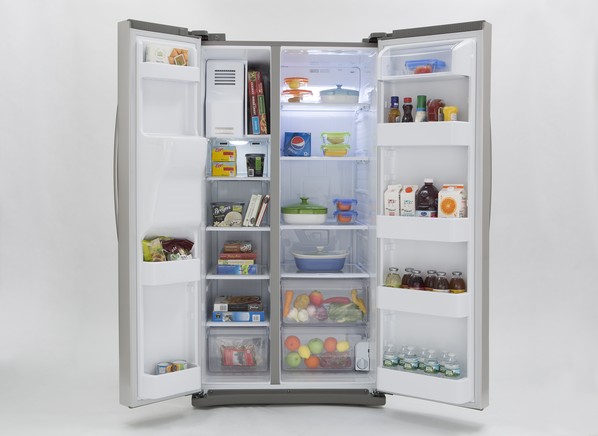Smart food storage takes into account the fact that climate conditions vary throughout a refrigerator. Door bins and upper shelves tend to be warmer than bottom shelves and deli compartments. Crisper drawers, meanwhile, can often be adjusted to create more or less humidity, depending on what’s going inside.
Here’s a step-by-step guide to organizing your refrigerator. Even if your fridge’s layout differs slightly, the same basic storage principles should deliver optimal results.
Buy Right Every Time
Get digital access to unbiased ratings and reviews.
Step One: The Door
In our temperature performance tests, which occur in climate-controlled chambers where we crank the heat up to 110 °F, temperatures on the door climb a couple degrees higher than the main compartment. That’s too warm for milk and eggs, despite the fact that many refrigerators have gallon door bins and egg-shaped compartments that seem like ideal places for these items. Instead, reserve the door for items that can handle warmer conditions, including the following:
• Butter
• Condiments
• Juice
• Cooking oils
• Soda
• Water
Step Two: The Meat/Deli Bin
This storage option is most common on French-door bottom-freezers, where it typically sits beneath the crisper drawers. It’s a helpful feature, especially if the temperature can be adjusted to best accommodate a range of foods—cooler for cured meats, for example, and warmer for a platter of hors d’oeuvres. Here’s the items that belong in the bin:
• Bacon
• Cheeses
• Deli meats
• Hot dogs
Step Three: The Crisper Drawers
Crisper drawers are designed for produce. On many refrigerators, the humidity can be adjusted from high, ideal for most wilting vegetables, to low, best for a lot of fruits, plus some vegetables with thin skins that like the air a bit dryer. Even if your crisper drawers aren’t adjustable, the following division will help maximum freshness by keeping like-reacting produce together.
Low-Humidity Drawer
• Apples
• Avocados (once ripe)
• Grapes
• Mushrooms
• Peaches, Pears, Plums, Nectarines (once ripe)
• Peppers
• Melon (once ripe)
• Summer squash
High-Humidity Drawer
• Broccoli
• Carrots
• Cauliflower
• Green Onions
• Leafy Greens
Step Four: The Lower Shelf
The lower shelf, usually located in the middle of the fridge, tends to be the coldest part of the refrigerator. This makes it ideal for storage of items that are more susceptible to developing harmful bacteria, including the following:
• Eggs (in their original carton)
• Milk
• Raw fish, meat, and poultry (on trays to catch drippings so as not to contaminate other foods)
Step Five: The Upper Shelf
The upper shelves, conversely, are the warmest part, with temperatures often reaching up around 40 °F. That’s too warm for milk and eggs, though yogurt is okay because it’s fermented. Here’s the complete list of what to store on the top shelf.
• Jam & Jelly
• Leftovers (large amounts should be transferred to several small containers so they’ll cool faster. Position towards front of fridge so you don’t forget them)
• Peanut butter
• Snacks (like hummus and fruit cups)
• Yogurt
Refrigerator No-Nos
Knowing what goes where in the fridge can prevent spoiling. You also need to know which foods don’t belong in the fridge in the first place. Here’s a look at that list:
• Bananas
• Bread (freezer is okay)
• Coffee
• Garlic
• Onions (keep away from potatoes)
• Potatoes (keep away from onions)
• Tomatoes


